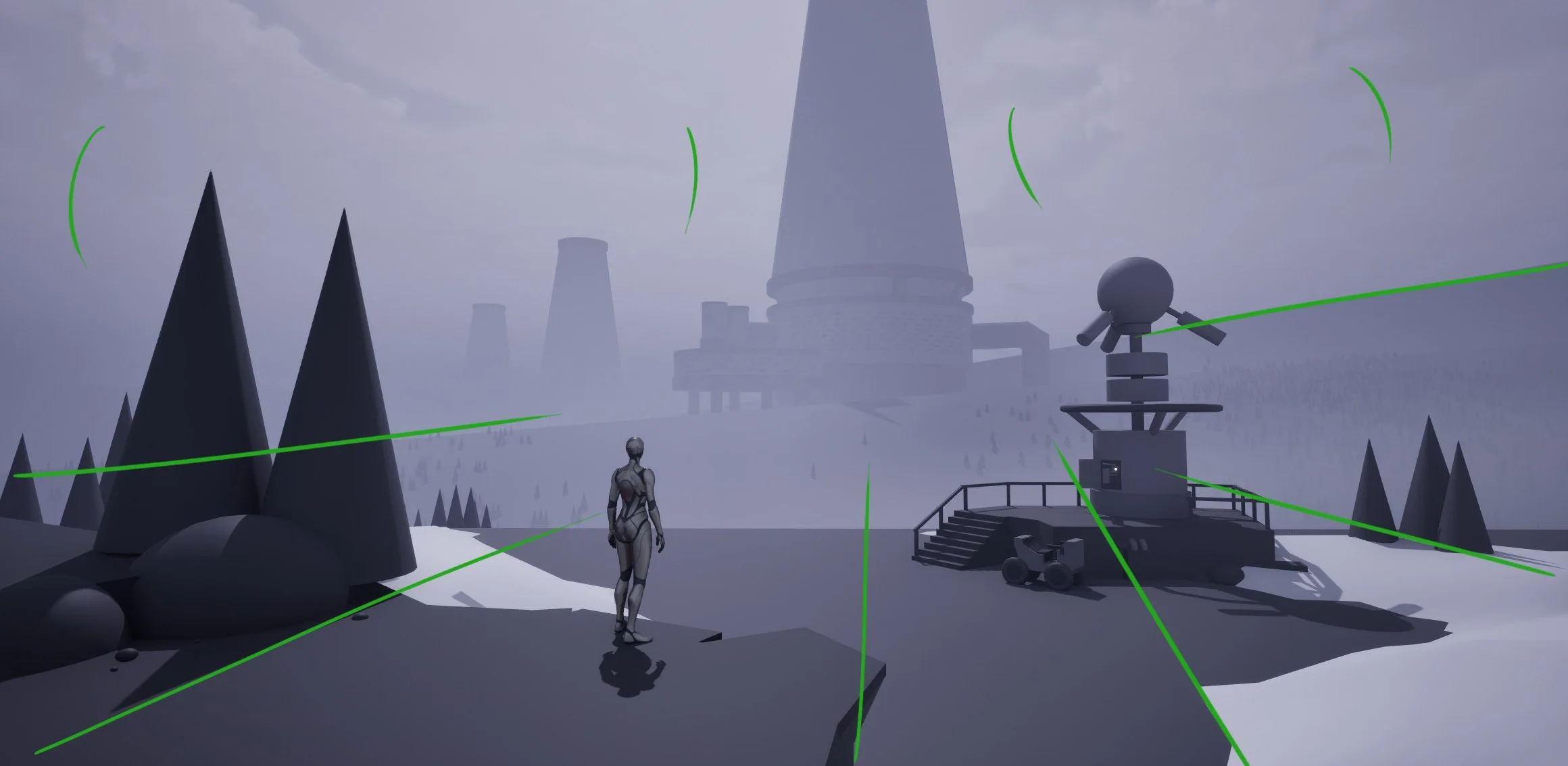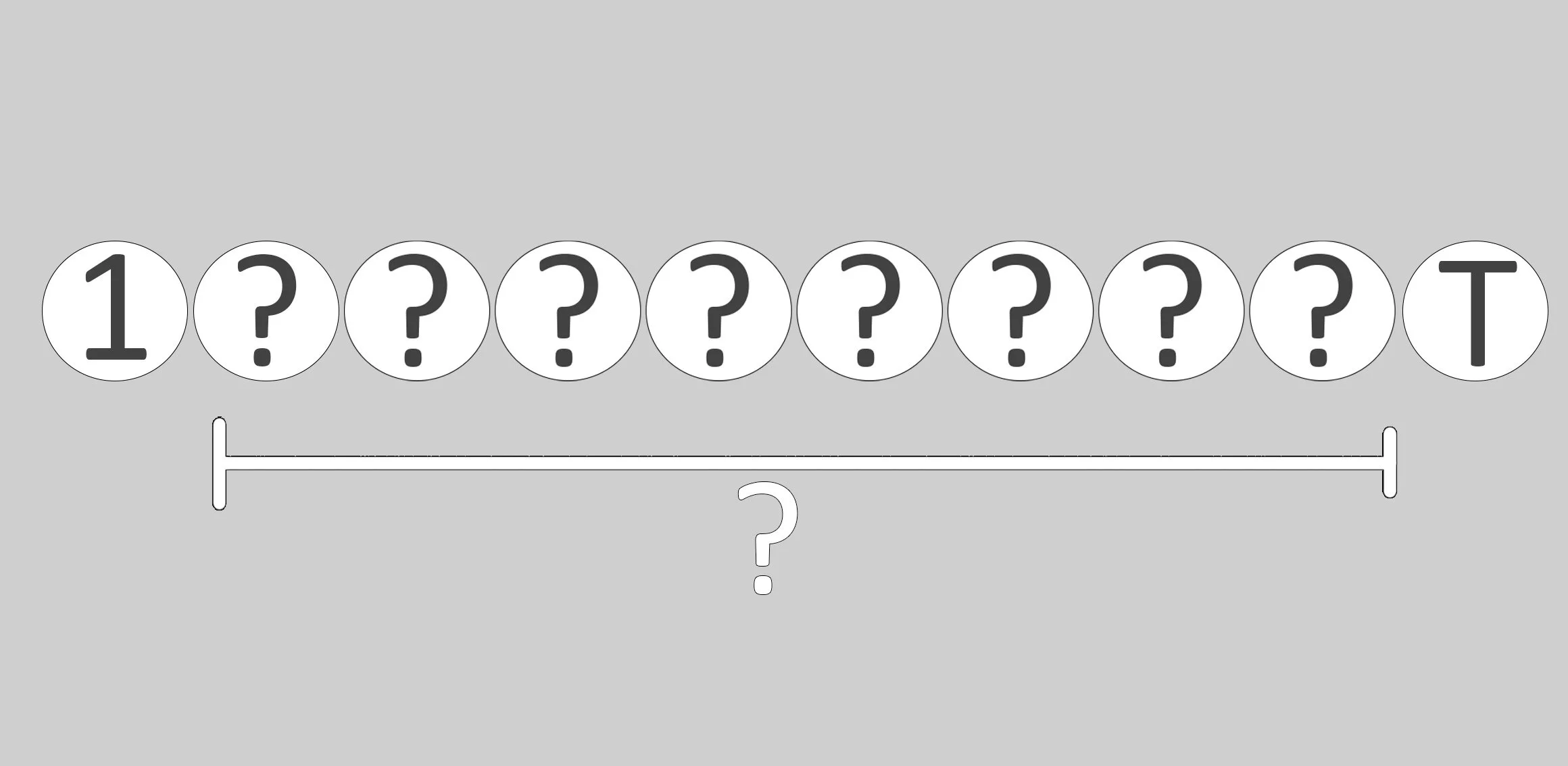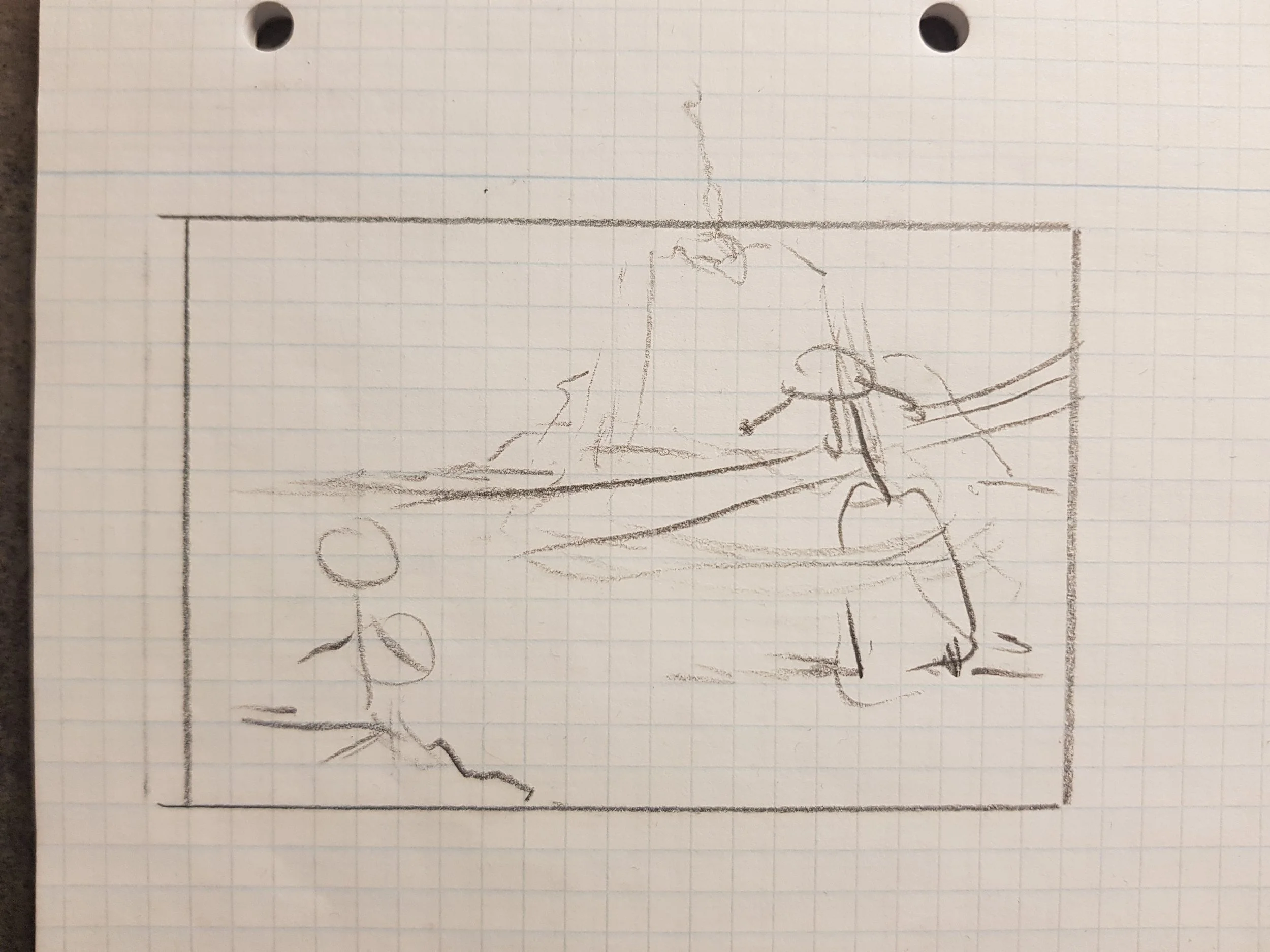Desolation
Overview
Made with: Basic shapes, material and lighting in UE5.
Main focus: Level design & experimentation with composition.
This started as an idea to show both a long-term goal and a short term goal at the same time, and then play on the contrast between these two and ways to make them clear/unclear in a single frame.
In this case it’s the contrast of understanding the overall objective (infiltrate/destroy the towers), but no clear way of reaching it vs. a minor objective (investigate this small outpost and maybe hijack the quadbike), but little to no clear reason why or indication of how it’ll help with the long-term goal.
In short, it was an exercise in doing some things right and other things “wrong”, and seeing what it would do. Also, sometimes I like to go off on tangents and think about the theory behind things in games, so this was a good excuse :)
The Towers
Long-term/macro objective: Destroy/infiltrate the towers.
Here’s the contrast of understanding the long-term objective (infiltrate/destroy the towers), but no clear way of reaching it (how to start and what to do exactly).
Conveying why the player should do this:
The tower is eye-catching: The tower looks important from all the things that “point” to it in the framing/composition, plus the empty space around it makes it stand out more
Size: The size of the towers are imposing on the player and makes them feel small in comparison. It’s an implicit challenge— like in a lot of other games, if something seems like an obstacle, it often ends up with the player overcoming it, so this plants that seed to put that expectation in.
NOT conveying how the player should take action:
There’s a few things that are left unclear and confusing for the player with the next immediate steps.
A: The scale: The towers are very far away and it’s hard to tell how big they actually are compared to the player character and thus how exactly the player should brace themselves for it. The trees in the distance help a little, but it remains unclear and leaves questions and potential for confusion with the player.
B: The disconnect between foreground and tower area: There’s no clear path that connects them and it’s not even clear whether the space in between a downward slope they can walk on or a big gap. The player can’t even tell if they can get to the other side from here, or whether they need to go somewhere else first.
C: No clear way of entry: In much the same caliber as with B, there’s no clear door way to enter the towers or sign to where to approach it from.
D: Which tower first? All three towers look the same, it’s hard to tell if there’s a difference. Are they all part of the long-term goal, or just one? Should you even start with the one closest?
The super basic sketch that started it all :)
The “pull” of an interaction/how: Focusing on this smaller step, it’s easy to understand how to complete it; the player can imagine how to physically grab the piece and put in the correct place. When the “how” of it is easy enough to understand yourself, there’s something about it that makes people feel an urge (or pull) to do it (this is also why tutorials with learn-by-doing are more effective than having players read instructions from walls of texts).
Most times, simply being able to gauge how to take the first step forward is enough reason to get a player to start interacting with the world.
Step 1: Explore the outpost (for some reason— connection to the rest is unclear).
Step ???
Step T?: Infiltrate the towers, somehow, later at some point
In short, it’s like having only the start and the end of a story and everything in between is a big question mark. You know the first step and the final one, but that’s it.
The Outpost
Short-term/micro objective: Explore the outpost.
Here’s the contrast of understanding the immediate next steps in front of you (explore the outpost, maybe steal the quadbike), but no clarity on how it relates to the long-term goal.
Conveying how the player should take action:
Here’s a few things that makes the outpost look usable and invite/guide the player to investigate.
A: Scale: The player can see the outpost is not too far away, within jumping distance. Looks reachable via a little jump down. Stairs and quadbike help confirm and reinforce the scale and make it look usable and inviting. The player can see it and understand where they can stand, where they can interact etc.
B: An open maintenance hatch: Much the same as with A, though more enforced as it’s open and the lights are blinking.
C: The top of the outpost indicates the function even if it’s purpose isn’t entirely clear. “Something about antennas, a radio maybe” the player might think. Even like that, it’s enough to make the player get a good idea of what to expect.
Also: The outpost looks very approachable, as one can clearly see that no one else is around, no enemies will be alerted, you’re safe to proceed.
NOT conveying why the player should do this:
D: There’s a disconnect between what the outpost does and how it relates to what the player is trying to do with the towers. It might seem useful, but how exactly this will help is unclear. “Why are we infiltrating this outpost? Stealing the quadbike might be good, because at least that will bring us closer to the towers faster than if we talked the entire way… but what about the outpost itself?”
Premise: Why vs. How
I like to think of this in terms of “why” and “how”. They’re two very different kinds of pulls and forms of motivation: “why” relating to the player’s ambition (e.g. “why am I doing this” -> “… because I want to win the game/complete an achievement” etc.) and “how” being about the player’s confidence and understanding of the each small step that helps them achieve this (“how do I do this?” -> “… firstly, by walking over there and using this object” etc.
Usually things that look important in some way become what players focus on— the bigger/more important something seems, the more players equate it to “victory”, and they gravitate towards it. Do the players understand why they’re here and what victory could look like?
Meanwhile, the “how” of it can also be seen as more about the usability of an item or affordances of an interaction/goal and whether the way to do it is clear. It’s less about a want or desire, and more about whether the player understands what they have to do in that particular moment, or at least feels confident enough to try experimenting with the first step.
It’s a great balance when you have both kinds of motivation at once, but in this case I’ve intentionally made it parts of it lacking: The long-term’s “why” is clear, but the “how” is not, whereas the short-term’s “how” is clear, and its “why” is not.
The “pull” of a goal/why: Sometimes the motivation is simple; the player sees an incomplete puzzle and the “why” of it becomes “because I want to see it completed”. This could be the reason the player needs to e.g. start looking for puzzle pieces to collect whilst exploring.
(Example from Braid where the completed puzzle also reveals an image)









